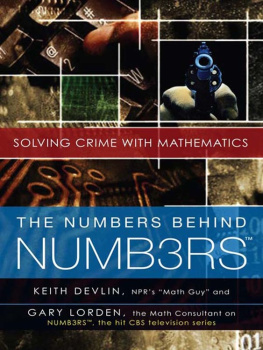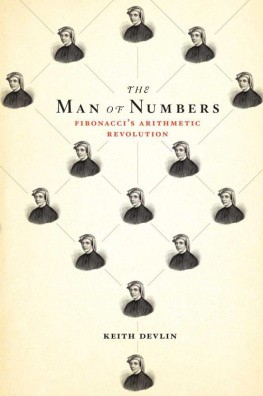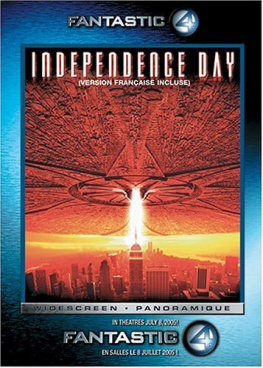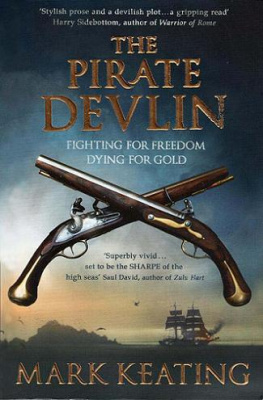Table of Contents
NOTE TO THE READER
The Pascal-Fermat correspondence is displayed and set in italics for easy identification, to facilitate checking back to follow the entire thread. (The main letter is revealed chapter by chapter.) Other letters in the Pascal-Fermat correspondence are also set in italics. Displayed quotations from others are set in small Roman font.
PREFACE
When Basic Books editor Bill Frucht approached me with the idea of a book about a single mathematics document that changed the course of history, my first thought was the letter Pascal wrote to Fermat in the seventeenth century that established modern probability theory. Everyone who has taken a course in probability theory will have heard the story of this letter. But few people, myself included, have ever read the original or looked into the story that surrounds it. Eager to work with Bill once again (he edited my earlier books The Math Gene and The Millennium Problems), I was moved to look more closely at the famous correspondence. What I discovered astonished me. The story is far more fascinating than I knew, and the letter itself provides a revealing insight into how two of the worlds greatest mathematical minds grappled with a problem, stumbling, making elementary errors, eventually being rewarded with flashes of brilliance. What also became clear from reading what the experts wrote before and after this letter was just how great was the revolution it brought about in the way humans think about the future. Much of the way we live our lives today was made possible by the mathematical ideas expressed in those few pages.
In addition to Bill, who has once again been a delight to work with, this project benefited from the editorial hand of Basics Courtney Miller and from the advice and guidance of my agent, Ted Weinstein. Professor John Stillwell, who read the first draft of the manuscript, put my mind at rest thatas a mathematician, not a historian of mathematicsI had not made any serious gaffes in reporting the historical development.
Keith Devlin
Palo Alto, California
CHAPTER 1
Monday, August 24, 1654
Monsieur,
1. I was not able to tell you my entire thoughts regarding the problem of the points by the last post, and at the same time, I have a certain reluctance at doing it for fear lest this admirable harmony which obtains between us and which is so dear to me should begin to flag, for I am afraid that we may have different opinions on this subject. I wish to lay my whole reasoning before you, and to have you do me the favor to set me straight if I am in error or to indorse me if I am correct. I ask you this in all faith and sincerity for I am not certain even that you will be on my side.
On Monday, August 24, 1654, the famous French mathematician Blaise Pascal sat at his desk and composed a letter to his equally famous countryman Pierre de Fermat. When completed, the letter would come to less than three thousand words, but it would change human life forever. It set out, for the first time, a method whereby humans can predict the future.
Not in the sense of saying what will happen; no one can do that, not even if you are Blaise Pascal, a child prodigy who at sixteen wrote his first original paper and while still a teenager had invented, manufactured, and sold a mechanical desk calculator (the Pascaline) that largely anticipated the commercial desk calculators that became commonplace some three hundred years later. Rather, Pascals letter showed how to predict the future by calculating, often with extraordinary precision, the numerical likelihood of a particular events occurring.
Within a few years of Pascals sending his letter, people no longer saw the future as completely unpredictable and beyond their control. They could compute the likelihoods of various things happening and plan their activitiesand their livesaccordingly. In short, Pascal showed us how to manage risk. His letter created our modern view of the future.
RISK
Today, we are so used to the idea that the future comes with probabilitiesthe chance that it will rain tomorrow, that house prices will rise over the coming months, that an individual will die within the next five years, or that terrorists will attack Los Angeles International Airportthat it is hard to imagine life being any other way. We insure our lives, homes, automobiles, and vacations and find it unremarkable that a company can make money by selling us that insurance. The engineers who design and build the aircraft we fly in know that their products are flawed, but because they can calculate with enormous precision the likelihood that a flaw will cause a major crash and determine that the risk is acceptably low, they are able to make the crucial decision to manufacture the plane and put it into commission. (NASA carried out essentially the same calculation in designing the space shuttle and concluded that a major disaster was likely in roughly one out of every two hundred flights, a figure it judged to be an acceptable risk. The calculation has proved tragically accurate. The risk of a Boeing 777 crashing is far, far less, but the companies that insure aircraft know it with considerable precision.)
Once humanity had a way to calculate the probabilities of future events, we were able to plan our lives with far greater precision than formerly. Not just scientists and engineers but also ordinary people were suddenly able to do things and go places that hitherto had been the province of the reckless, the rich, or the ignorant. Business, politics, defense, warfare, science, engineering, medicine, sport, recreation, finance, housing, transportation, and many other aspects of everyday life are today filled with probability computations.
Even those who are not schooled in the mathematics of calculating odds know that the future is not a matter of blind fate. We can often judge what is likely to happen and plan accordingly. Yet before Pascal wrote his letter to Fermat, many learned people (including some leading mathematicians) believed that predicting the likelihood of future events was simply not possible.
The ability to calculate probabilities transformed the practice of statistics, changing it from the mere collection and tabulation of data to the use of data to draw inferences and make informed decisions. Without the ability to quantify risk, there would be no liquid capital markets, and global companies like Google, Yahoo!, Microsoft, DuPont, Alcoa, Merck, Boeing, and McDonalds might never have come into being. The pundits and pollsters who today tell us who is likely to win the next election make direct use of mathematical techniques developed by Pascal and Fermat. In modern medicine, future-predictive statistical methods are used all the time to compare the benefits of various drugs and treatments with their risks. As a result, the majority of people in the developed world now lead far longer and healthier lives than at any previous time in history.
Within a hundred years of Pascals letter, life-expectancy tables formed the basis for the sale of life annuities in England, and London was the center of a flourishing marine insurance business, without which sea transportation would have remained a domain only for those who could afford to assume the enormous risks it entailed. Still another legacy of that correspondence is the casino industry. It truly is an industry, and a highly profitable one, because the casinos do not gamblethey leave that to their customers. Using the ability that probability theory gives them to predict the outcomes of games of chance, they can calculate in advance exactly how much money they will make each week. Political pollsters sometimes get the answer wrong; for them, predicting the future is not 100 percent certain. But the casinos never get it wrong.

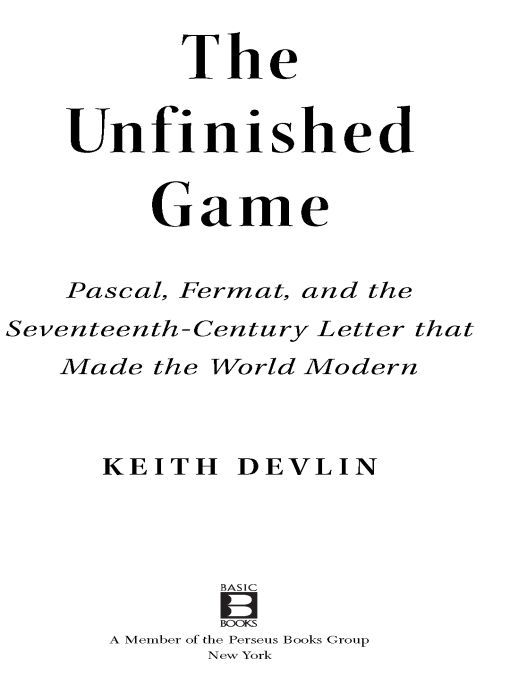


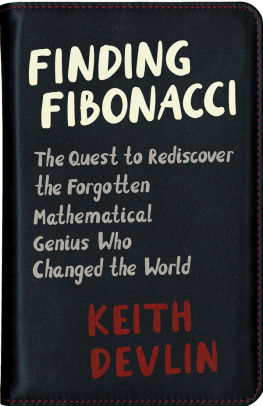


![Keith Burgun [Keith Burgun] - Clockwork Game Design](/uploads/posts/book/119426/thumbs/keith-burgun-keith-burgun-clockwork-game-design.jpg)
